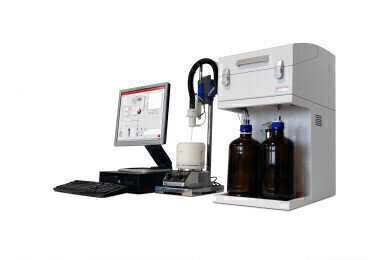Measurement and Testing
An innovative solution for Soluble Fraction determination in PP
Apr 08 2014
Designed and manufactured by Polymer Char (Spain), CRYSTEX QC is an innovative approach designed for soluble fraction determination in quality control laboratories at Polypropylene manufacturing plants. The analysis of the amorphous fraction in polypropylene is considered a fundamental parameter in the production of the resins; among others, it provides a measurement of the rubber content incorporated when producing high impact copolymers, which has significant influence on the polymer properties and processing. The amorphous fraction is required for certain production applications, such as in the case of high-impact polypropylene copolymer resins.
Traditionally, this test (also known as 'xylene solubles measurement') is performed through gravimetric and wet chemistry methods that involve constant human interaction and result in a tedious and time-consuming operation. Performing this test through a traditional method requires for the analyst to weigh a sample, dissolve it using hot xylene, cooling down the solution for precipitation, filtrate it, obtain an aliquot of solution to later evaporate it, dry it and having to finally weigh the sample once more. The entire operation can last an approximate period of six hours. Not only is this approach very inconvenient, but it also has safety implications for the operator because it requires manipulating solvent at high temperature.
CRYSTEX QC is an innovative instrument that full-automates the process of obtaining the soluble fraction in polypropylene samples (one at a time) through a temperature rising elution fractionation (TREF) procedure that is much simpler and safer to use. The instrument speeds up the analysis process and eliminates major steps usually performed manually. All the analyst is required to do is put an approximate amount of sample into a bottle, place it in the instrument, and lower a handle to pierce the bottle with a needle that will inject the solvent. The remaining steps in the process are completely automated, including solvent dispensing into the bottle for dissolution, filtration, and rinsing of the lines and needle at the end of each analysis cycle. There is no need of weighing the sample or handling solvent manually at any point of the analysis. High sample representativeness is obtained because the instrument allows using up to four grams of polymer.
Furthermore, CRYSTEX QC provides a unique and comprehensive analysis because it measures not only the soluble or amorphous fraction percentage, but it provides additional information on ethylene content through an infrared detector (that ensures high precision of the results) for the whole sample, the soluble fraction and the crystalline fraction. An integrated viscometer delivers intrinsic viscosity also for all three parts of the sample. All this information is obtained in a single analytical process that lasts in total, two hours.
Digital Edition
PIN 25.4 Aug/Sept
September 2024
Analytical Instrumentation - Novel and Rapid LSC method for the analysis of biogenic carbon in fuels Measurement and Testing - Matrix evaluation on the Xplorer-V with Vectra autosampler accordi...
View all digital editions
Events
Sep 23 2024 New Orleans, LA, USA
Sep 23 2024 Rio de Janeiro, Brazil
Sep 24 2024 Kielce, Poland
Sep 24 2024 Calgary, Canada
IDW DOWNSTREAM CONFERENCE 2024
Sep 24 2024 Warsaw, Poland



















